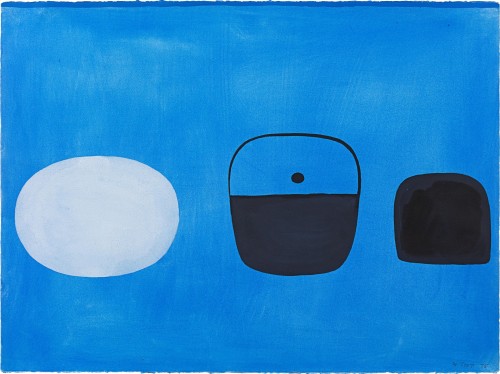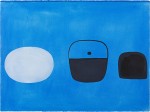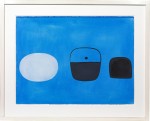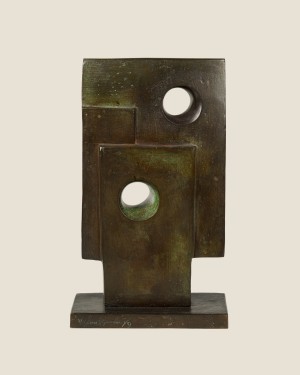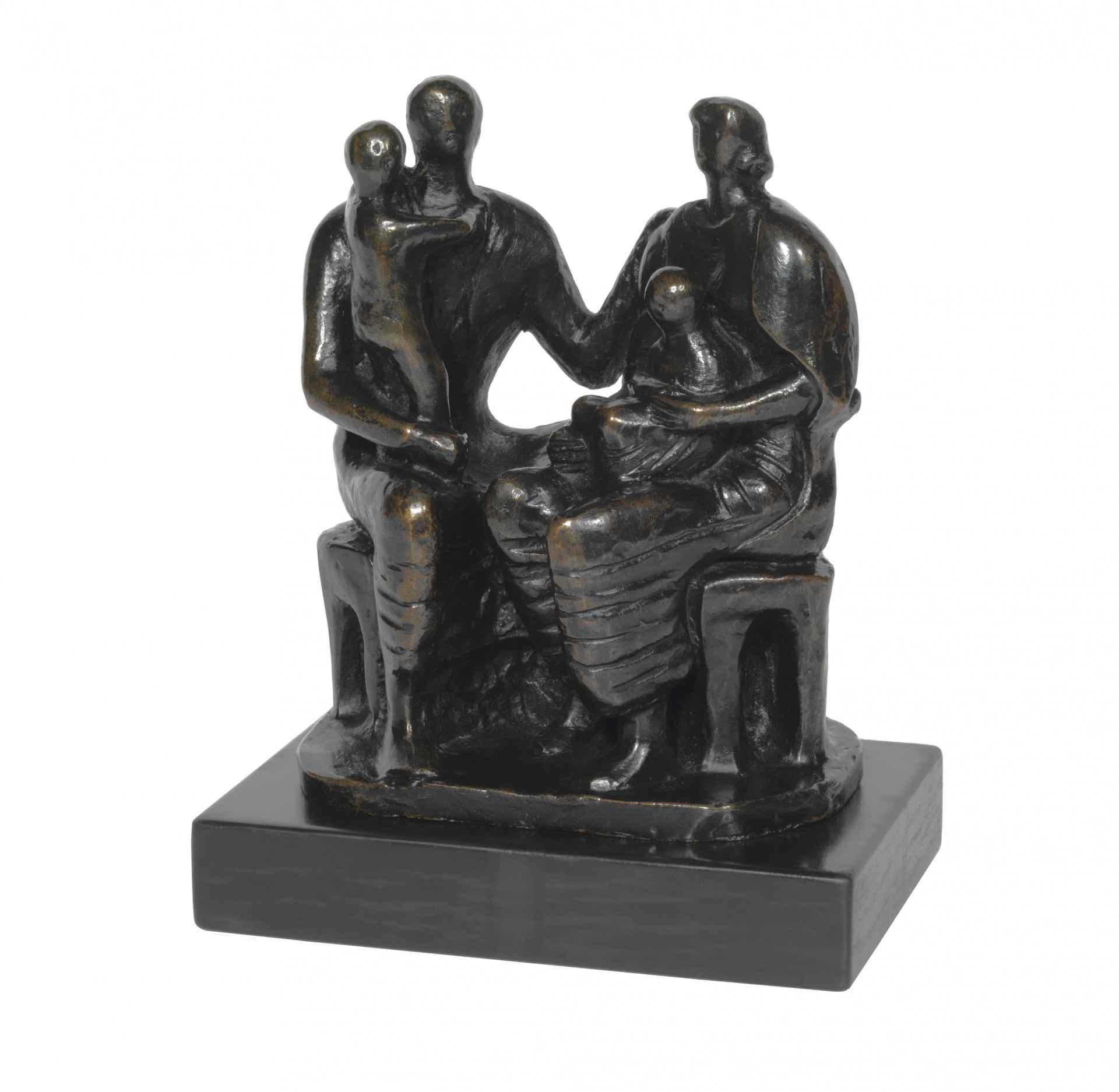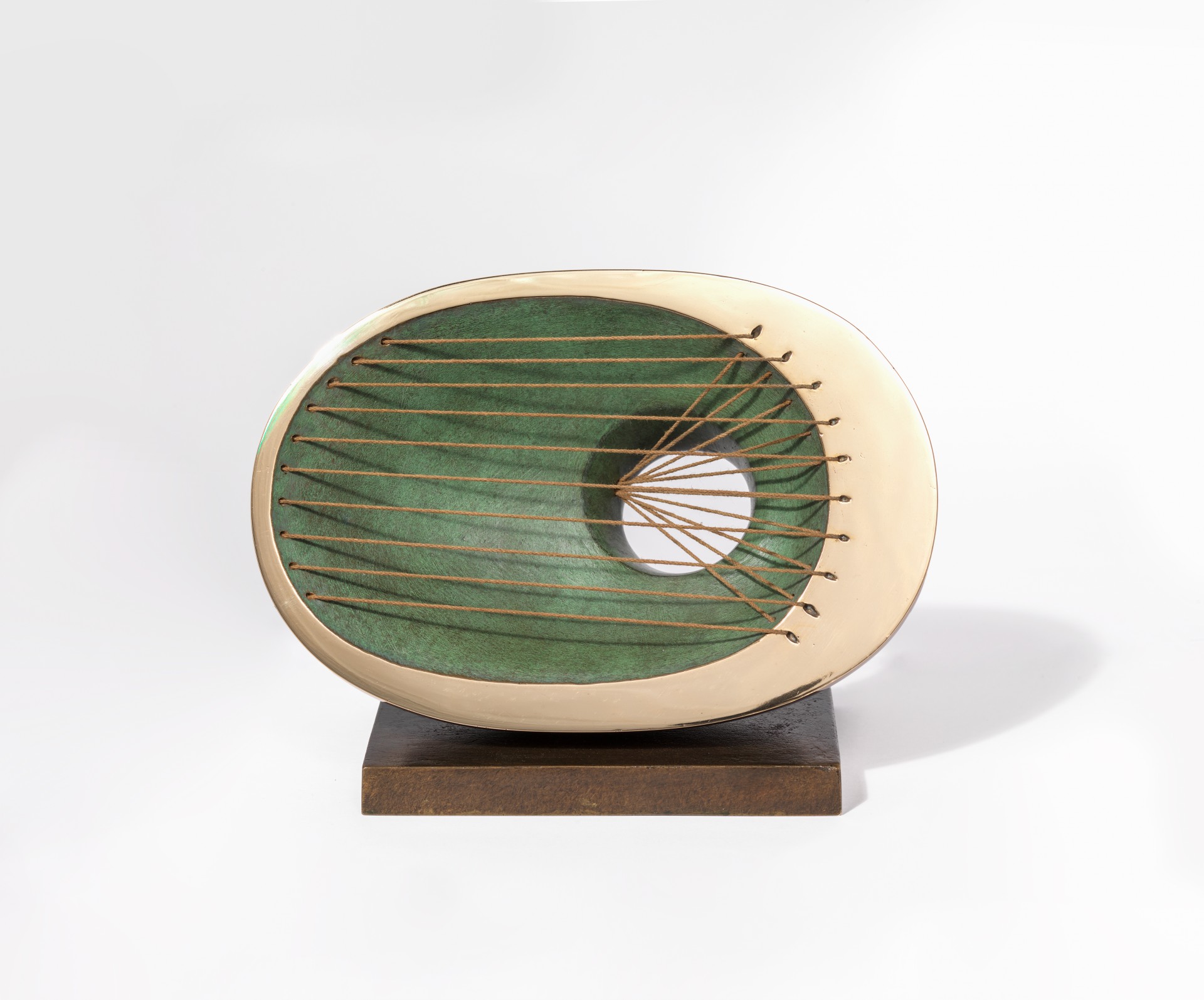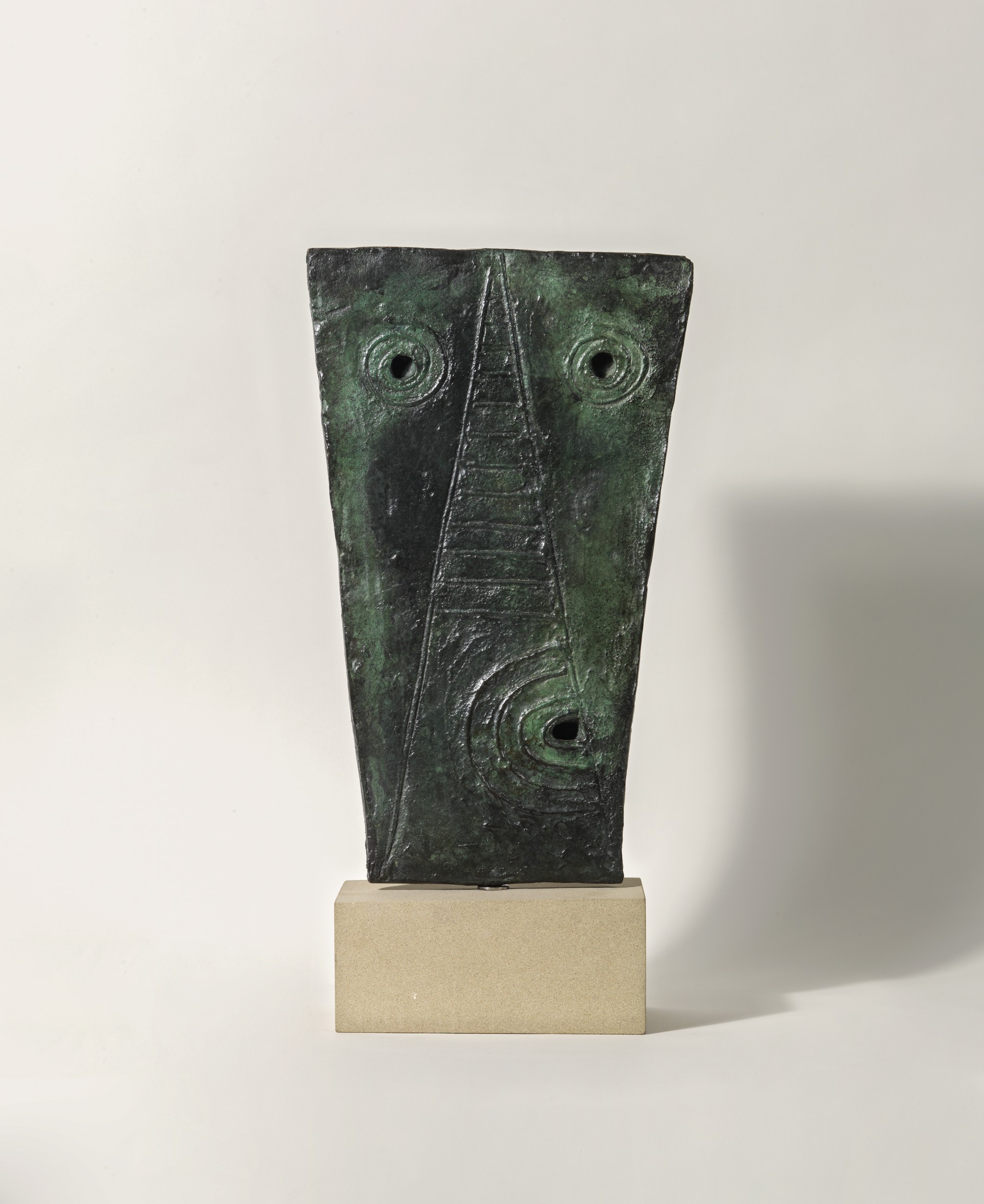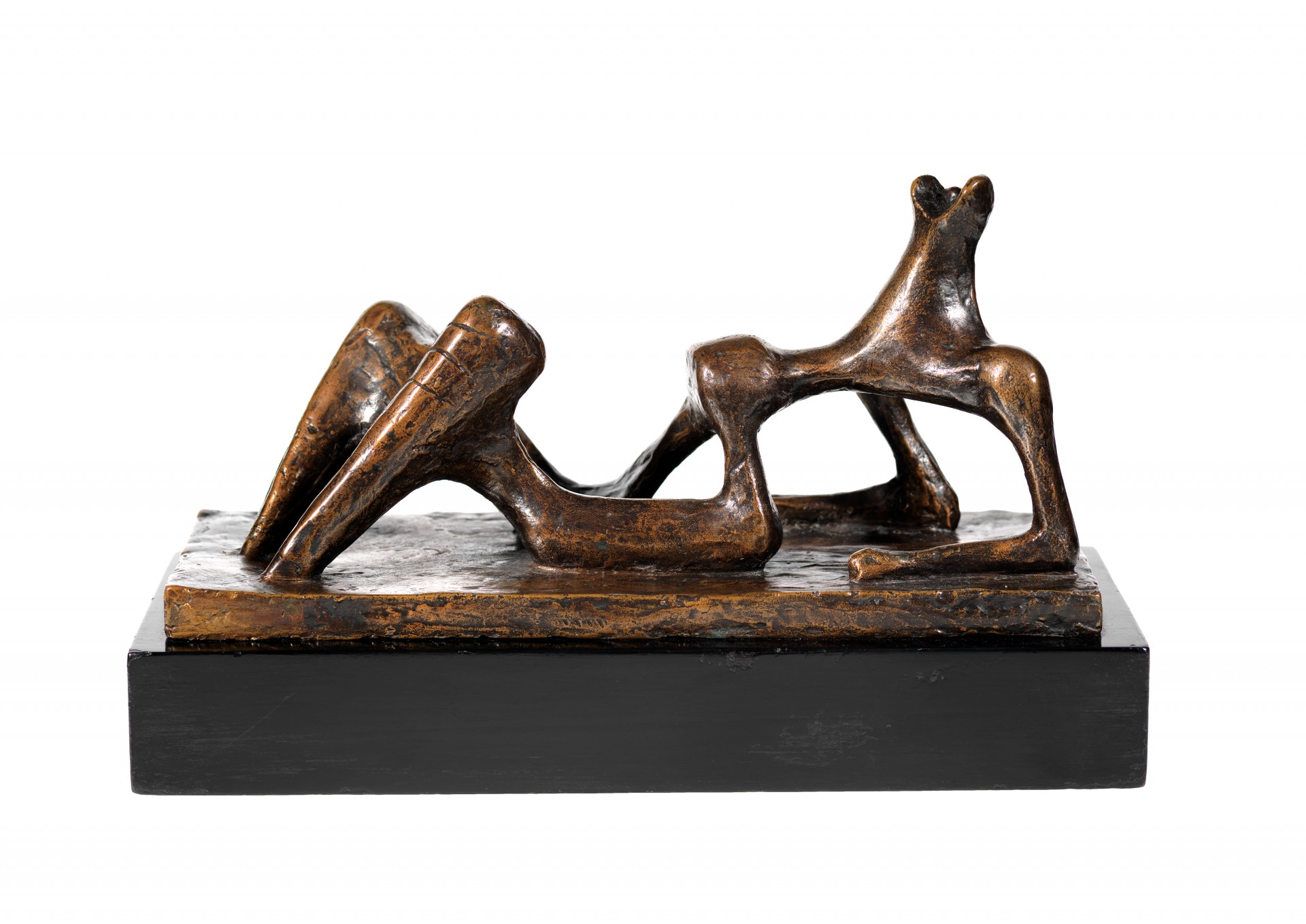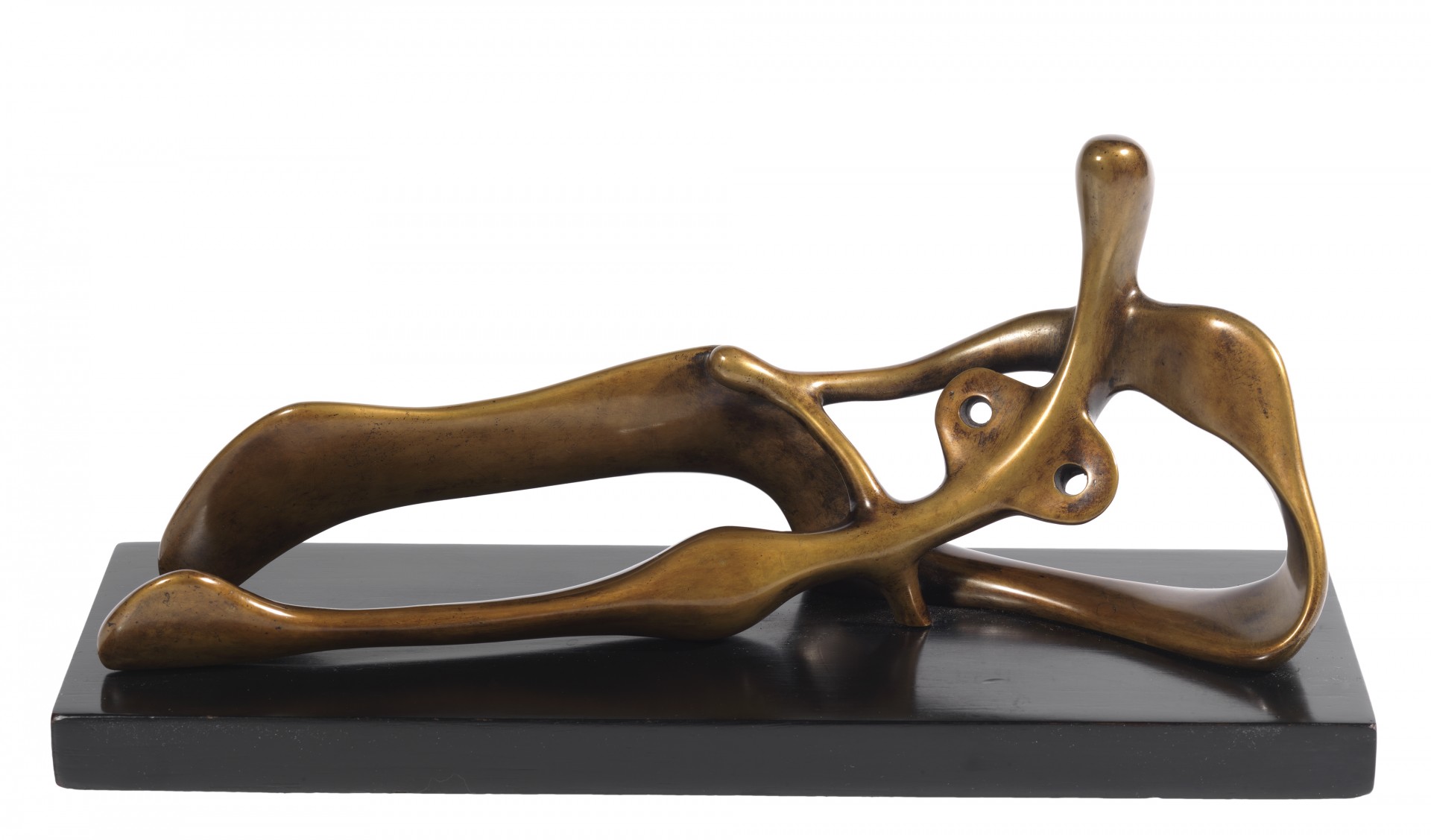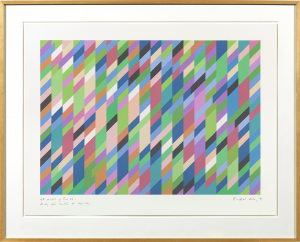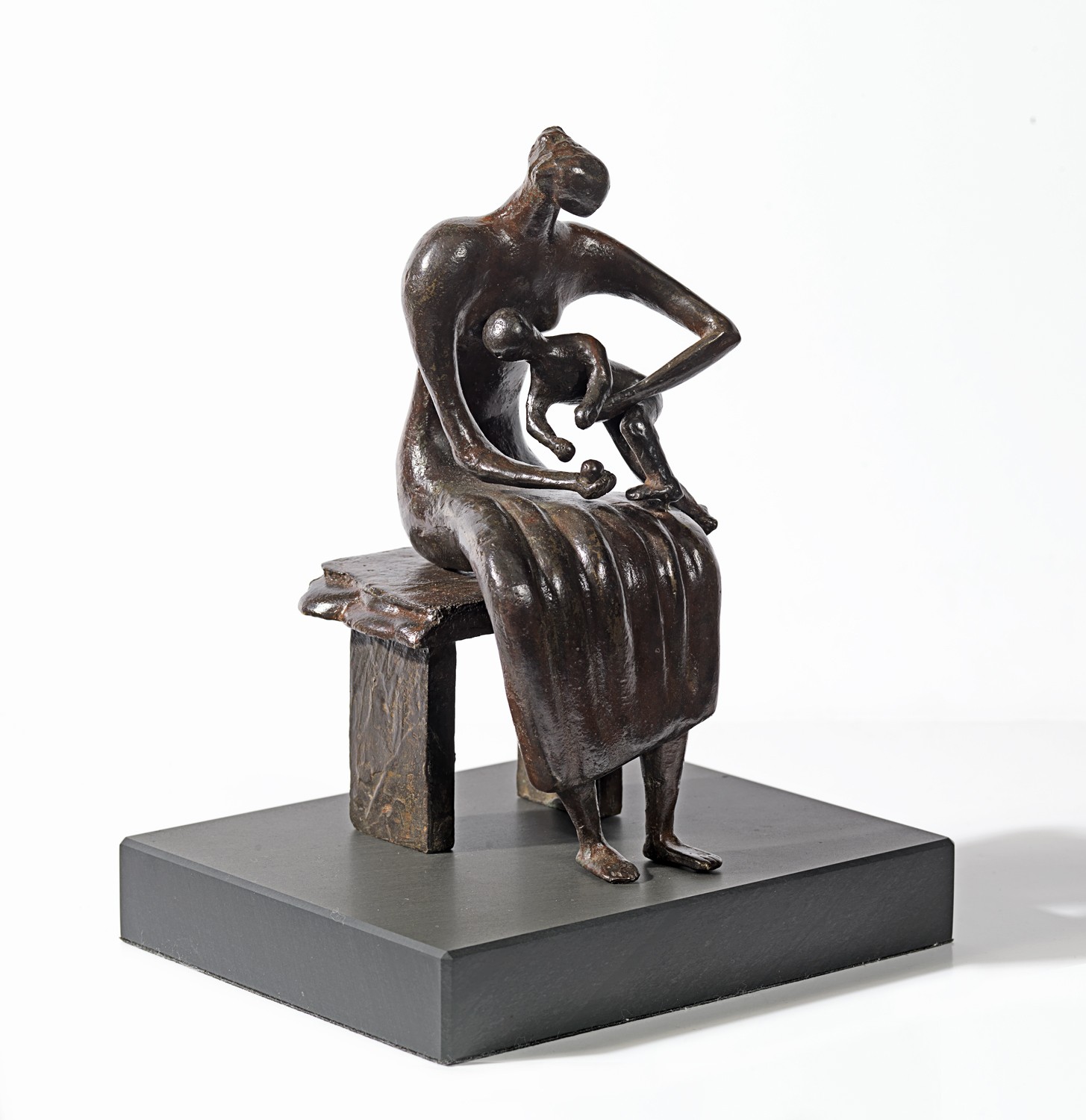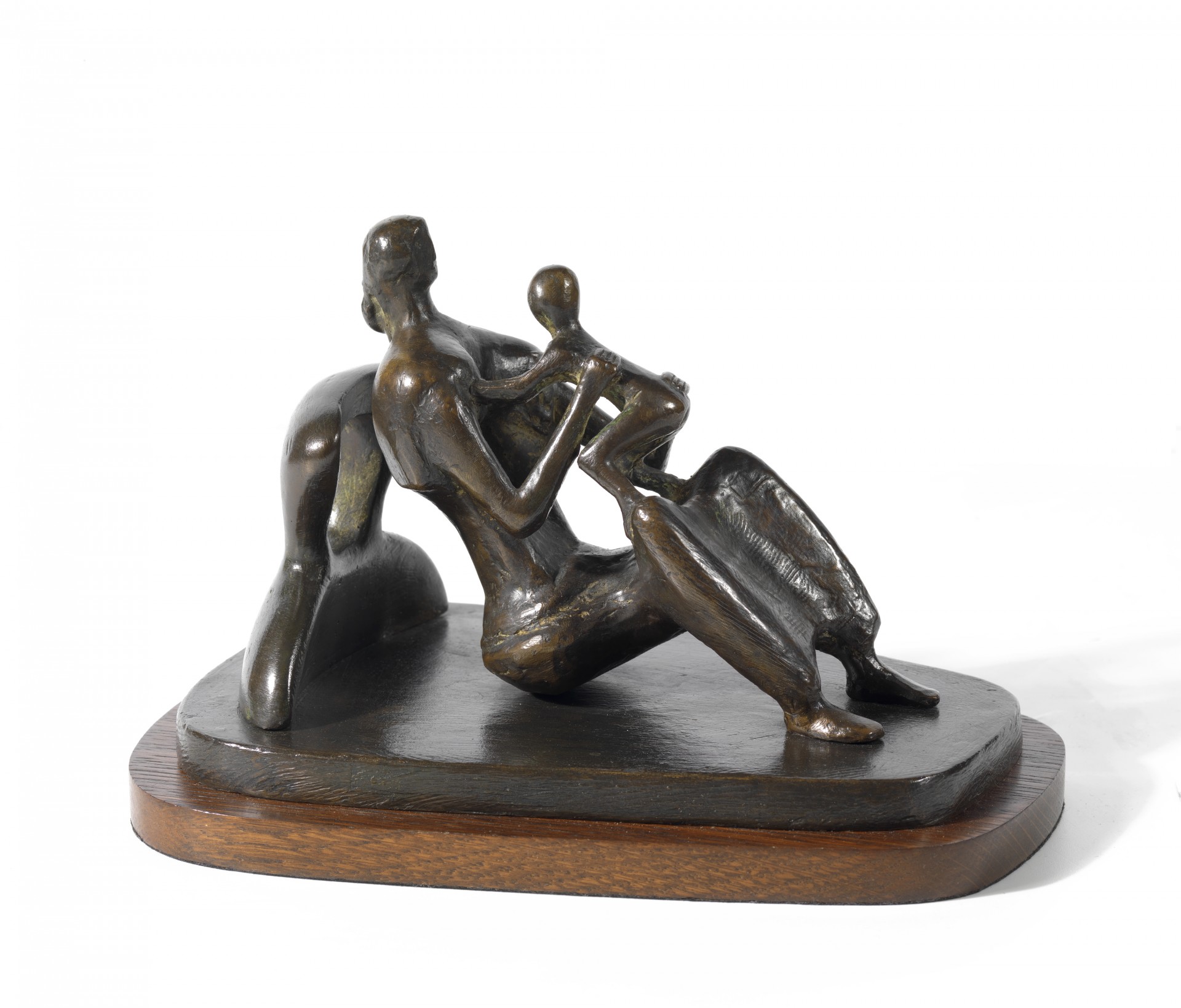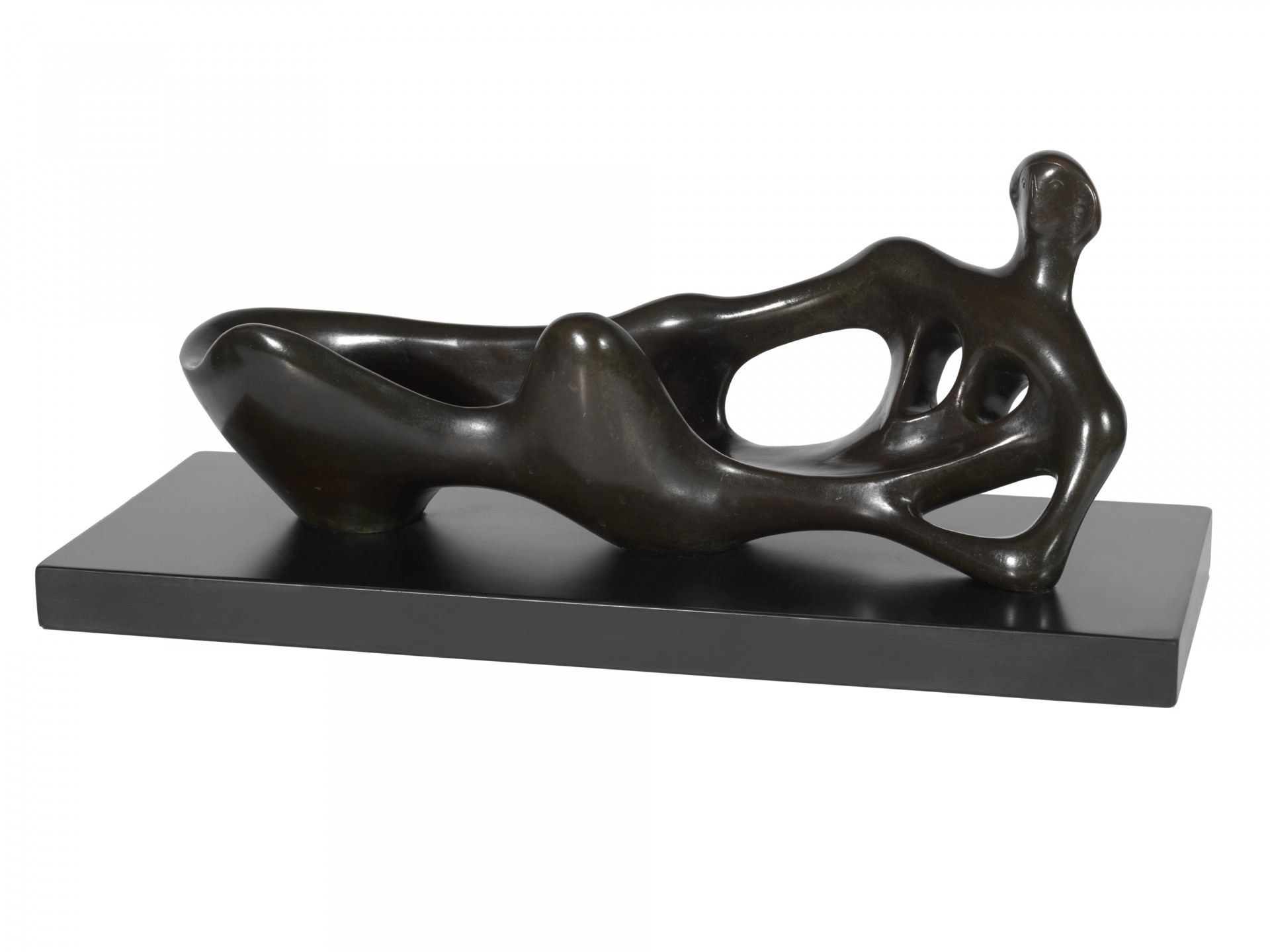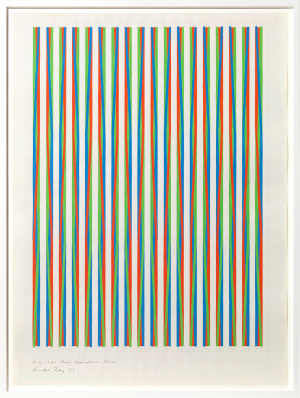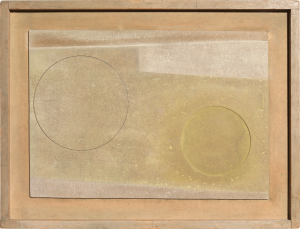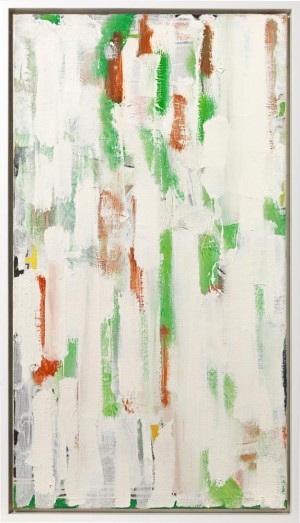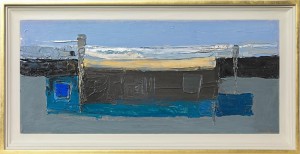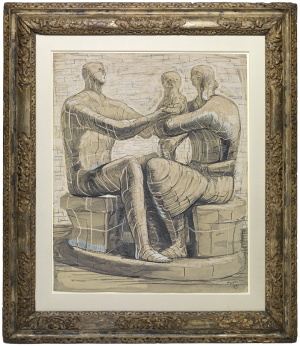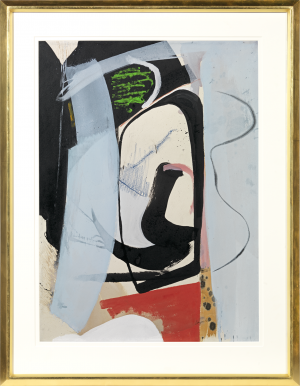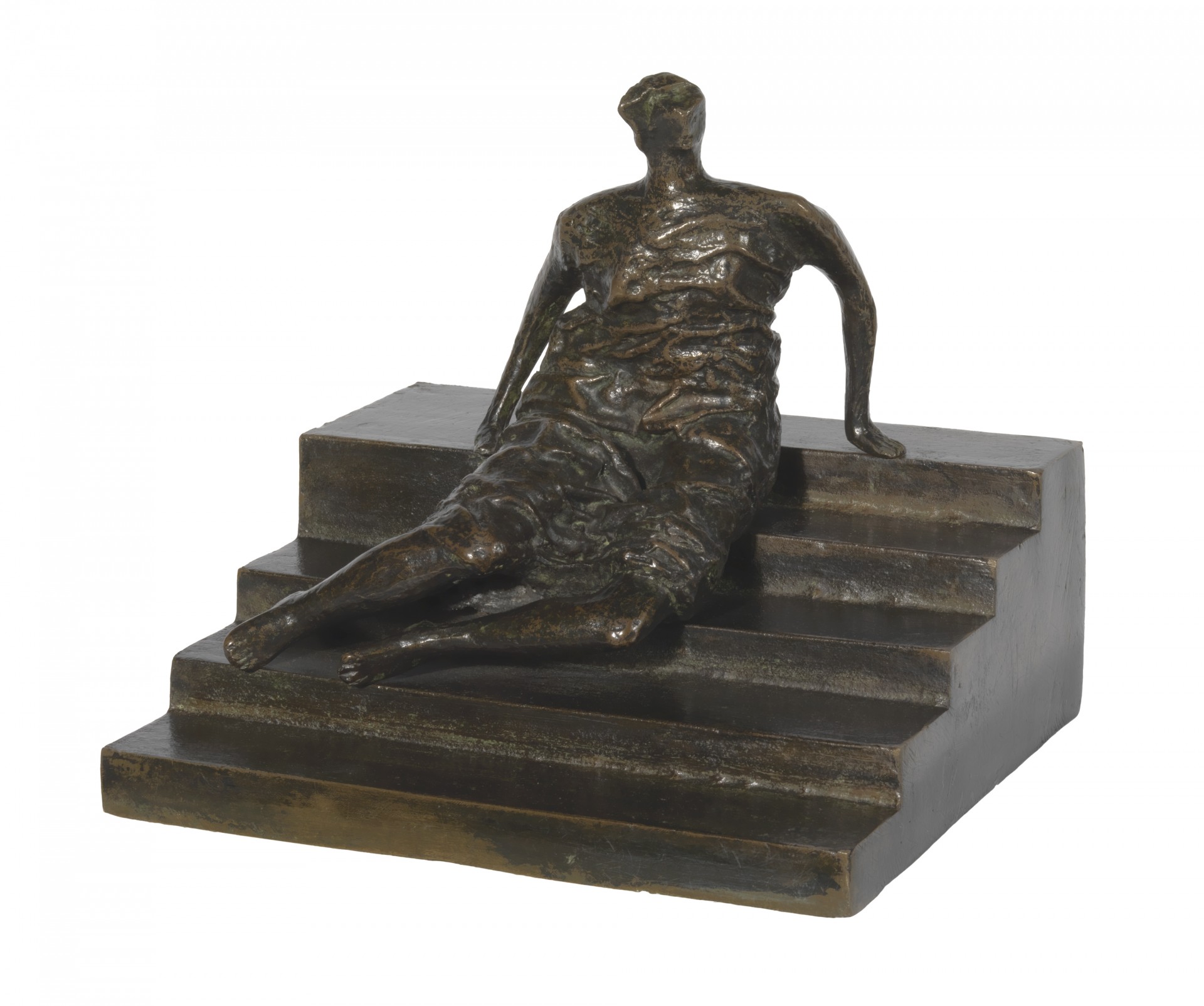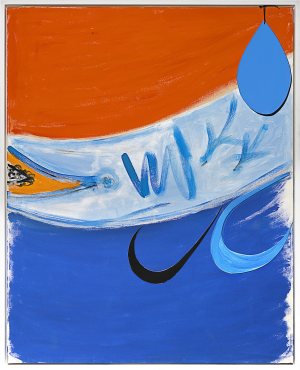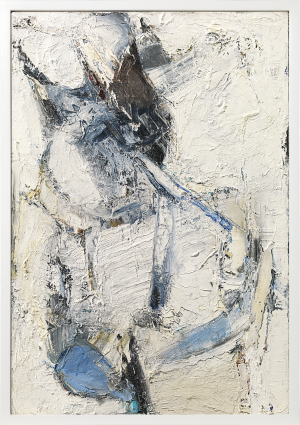William Scott
Bowl with lid on blue
Gouache: 22.2 x 30 (in) / 56.5 x 76.2 (cm)
Signed and dated lower right: W. SCOTT 75
This artwork is for sale.
Please contact us on: +44 (0)20 7493 3939.
Email us
WILLIAM SCOTT
Greenock 1913 - 1989 Somerset
Ref: CB 183
Bowl with lid on blue
Signed and dated lower right: W. SCOTT 75
Gouache: 22 ¼ x 30 in / 56.5 x 76.2 cm
This work is recorded in the William Scott Archive as no.1386
Provenance:
Harold Hart, New York;
private collection, acquired from the above in October 1979, then by descent
Exhibited:
Santa Barbara, Museum of Fine Art, William Scott: Gouaches, January 1976 (no catalogue)
New York, Martha Jackson Gallery, William Scott: Gouaches, March-April 1976 (no catalogue)
William Scott’s devotion to still life and its stark, dramatic representation had autobiographical as well as aesthetic significance: ‘The forms I use are the forms I see about me and the forms I have dreamt about since I was a child.’[1] Scott’s Bowl with lid on blue is a mature, minimalist gouache whose objects are abstracted into succinct silhouettes hovering weightlessly against a bold, dynamic ground. While Scott remained devoted to the representation of still life subject matter throughout his career, his paintings from 1969 onwards drastically departed from his earlier investigation of the genre. The setting disappeared along with the table-top; the individual domestic objects were reduced to flat symbolic forms. The pictures were increasingly referred to as compositions rather than still lifes in this second phase of abstraction, each an ordered variation on a new restricted theme or tonal contrast. This superb gouache is a perfect example of the richness and complexity of colour and composition achieved with Scott’s new minimalist vocabulary.
Each form is perfectly placed, described with economy without being severe and set against the rich, captivating colour-field. Norbert Lynton referred to the reductive and yet harmonious purity of this series of still lifes as ‘neo-classical’, expressing a kind of musicality in the distribution of ‘a few notes cleanly struck, at finely judged intervals…As in the best Neoclassical painting and sculpture, purity is revealed as refined sensuality, austerity as an acute form of luxury.’[2] Lynton returns to Scott’s Neoclassical period, describing it as ‘a conscious return to basics that is belied by the sheer beauty of many of the examples…It is not only the frying pans and the pots that are honed down into the succinctest possible emblems: the paintings themselves are strictly focussed – and thus they draw attention to other, more delicate ambiguities that now became WS’s concern and delight.’[3]
In the early 1970s, retrospective exhibitions of Scott’s important and illustrious career were held at the Scottish National Gallery of Modern Art, Edinburgh in 1971 and at the Tate Gallery, London in 1972. The following year, the artist travelled to Australia, Mexico and India with his wife Mary, as a visiting lecturer for the British Council and in 1974, his work was included in the Arts Council exhibition, British Painting ’74 at the Hayward Gallery, London.
[1] The artist cited in Lawrence Alloway (ed.), Nine Abstract Artists, their Work and Theory, London, 1954, p. 37.
[2] Norbert Lynton, William Scott, Thames & Hudson, London, 2004, p.317.
[3] Ibid., p.312.

